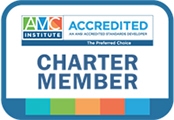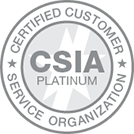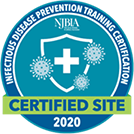Video and audio-only formats take center stage in the ever-changing social media landscape
Visit 2021 Predictions Webpage
Watch 2021 Predictions YouTube Playlist
At the start of the year, AH released a series of predictions of what lies ahead for associations and non-profits in 2021. We're revisiting those predictions each month to see what's changed as associations and non-profits continue to adapt.
By now, most association professionals know that social media is essential for any organization to be “found.” But as it permeates society and technology continues to evolve, more than just the content you produce influences members and prospects—the format actually shapes the message and can determine how well it is received.
At the beginning of the year, AH MarCom team members Melissa Willhouse, Digital Marketing Coordinator, and Pete Caniglia, Associate Marketing Manager, saw both video and podcasting as the most essential trends in social media content formats, to both non-profits and businesses alike.
The Explosion of Video
The 2020 statistics for the reach of video are staggering:
- People watch an average of 16 hours of online video per week, which is a 52% increase in the last two years.
- Social video generates 1,200% more shares than text and image content combined.
- Viewers retain 95% of a message when they watch it in a video compared to 10% when reading it in text.
- 96% of people have watched an “explainer” video to learn more about a product or service.
“The metrics blow everything else out of the water,” said Willhouse. “If the video loops you in, you automatically feel engaged.”
But before you begin crafting your own association’s message to the masses, remember that in order to be effective, the video has to land both practically and emotionally—and that means knowing your audience and targeting the right message to the right people. To make a real impact, make the effort to collect data on your existing membership and research who your ideal potential members are.
“You need to put in the work,” explained Willhouse. “Marketing has changed a lot since Mad Men.”
The first stop for associations adding video to their content mix: a thoughtful look at strategy. “Consider what the goal will be of your video content and what audience you’re hoping to reach,” said Sarah Black, AH’s Director of Content and Creative. Associations just getting started with video might have a light strategy that helps them test different aspects of video on different platforms, finding what works for them. Black recommends associations evaluate member and market data, and build a library of video content they like from other organizations. “Even a little bit of thought goes a long way in creating an effective approach to video content,” said Black.
After collecting and analyzing data and sample videos that you find inspiring, you could embark on a sophisticated film endeavor. However, don’t forget that many associations have a secret weapon they may not be thinking about: Video footage from their annual meeting.
“It’s important not to overthink the content of your video,” said Caniglia. “You can use recordings from a 2020 virtual meeting session or stock footage from an in-person event and cut it down into the best pieces. There’s no need to write scripts. Most people at these meetings are speaking from their heart, and people can connect with it when it’s genuine and authentic.”
One example is the Commission for Case Manager Certification (CCMC), which used multiple clips of certificants explaining the value of their certification.
“It was incredibly successful on social media,” said Caniglia. “I think it’s because it humanized the organization, in a transparent way.”
Association Podcasts: Small Investment, Big Returns
Another significant trend is podcasting. Not only has 55% of the United States population listened to a podcast, but listeners are much more active on every social media channel (94% are active on at least one, versus 81% for the entire population) and are more likely to follow companies and brands on social media.
Much of the popularity of podcasts is attributed to today’s busy lifestyles— it’s a channel that can provide a specific niche of information, ideas, and entertainment and can be listened to while cooking, getting ready for work, or while driving or travelling. Another reason for its popularity is the cost.
“The biggest benefit of podcasting is that doesn’t cost much to create and the creator can upload it for free,” said Willhouse. “While you would want to invest a little bit in a quality microphone for a professional sound—no more than $40 or so—and invest the time to record and edit it, it’s still cheap and efficient. You don’t have to worry about out-of-pocket expenses, and you can scale it as you grow.”
But despite the enthusiasm organizations often show around having their own podcast, some never start, or worse, record several in quick succession but stop before they can develop a following.
“Everybody likes to talk about starting a podcast, but often they don’t do it,” explained Caniglia. “People can assume it’s easier than it is. It’s not hard to do, but you need to plan for it. It’s best not to put too much pressure on yourself at first and to pace yourself. People tend to burn out and then stop podcasting altogether.”
The idea is to start small and decide what is reasonable for the amount of time you have for consistent release—perhaps bi-monthly, or monthly, before going weekly or even daily.
But Caniglia also warns about too much planning, especially around the content itself.
“Remember that social media content is social,” he said. “A podcast—or any type of content for these platforms—should be more about setting up a conversation, not a script.”
One association podcast that has taken off is “WOCTalk,” the official podcast of the Wound, Ostomy, and Continence Nurses Society (WOCN). It began at WOCN’s 2019 annual event, where several of the featured speakers were interviewed in-person, but has since expanded to include timely topics, news, and information specific to this area of nursing. WOCTalk now has a broad audience within the profession, with over 60 episodes to date and 100,000 downloads. In addition, certain episodes offer continuing education credits and award contact hours upon the completion of a submitted evaluation.
“They put out a lot of content, which is hard to do,” said Willhouse. “But this investment of time is providing a lot of value with listeners, and since it’s not behind a paywall and is available to anyone, it’s like a continuously-running commercial for the organization itself.“
A Future Opportunity for Associations?
A platform that may not yet be ready to accommodate association messages in 2021 but might be worth considering in the coming years is—believe it or not—TikTok. Though the current perception is that the video-only platform is strictly for tweens and teens to broadcast viral dances and silly memes, it is increasingly being used by businesses and scientists to post videos that explain new products and technologies and by medical professionals to provide health information to the public in new and engaging ways.
“Each platform changes as it progresses,” explained Caniglia. “Instagram was once aimed at young photographers, but has now become predominantly a shopping app. On TikTok, you’re seeing more videos about how people are solving problems and helping their clients.”
Another point about TikTok is that its paid content, or ads, have proven extremely effective. One reason for this is that the ads are set up a lot like regular posts: as with all the platform’s content, you can’t scroll past it without seeing the first few seconds of the video, which makes it easy to get “sucked in,” and even more so if the content is targeted to the viewer.
In the coming years, it might be a way for an association to reach younger audiences—but not just yet. At the moment, ad costs on the platform are prohibitive to most organizations that don’t have deep pockets. Reports from AdAge in late 2019 show that TikTok's cost of advertising can be between $50,000 to $120,000 depending on the ad format and duration, and it hasn’t come down much since. However, like most social media platforms, it is expected to come down in the future as it evolves.
The Takeaways for Association Social Media Marketing
When it comes to making your association’s mark on social media, it’s the same for any organization: it takes an investment of time to generate targeted, quality content, and the patience to keep a balance between ROI data and constant experimentation according to its constant shifts.
“The most important thing to remember is that social media is dynamic and always changing, and not to hang your head in defeat if you don’t see results in the first week,” said Willhouse. “What worked last year for your organization may not work this year. But what’s amazing is that now we have the opportunity to get our messages to the right people at the right time.”




